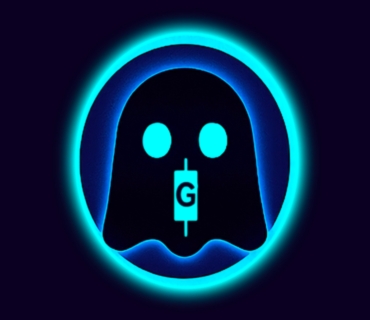An NFT, or Non-Fungible Token, is a unique digital asset stored on a blockchain that represents ownership or proof of authenticity of a specific item — whether it’s digital art, music, collectibles, in-game items, or even real-world property.
Unlike cryptocurrencies such as Bitcoin or Ethereum, which are fungible (each coin is identical in value and interchangeable), NFTs are non-fungible, meaning each one is distinct and cannot be exchanged on a one-to-one basis.
In essence, an NFT acts as a digital certificate of ownership, publicly recorded on a blockchain to prove who owns what — and when.
The Meaning of “Non-Fungible”
“Fungible” simply means interchangeable. For example, one U.S. dollar is equal to any other dollar, and one Bitcoin is equal to any other Bitcoin.
“Non-fungible,” however, refers to something unique — like a one-of-a-kind painting or a rare trading card. NFTs bring this concept of uniqueness into the digital world, creating scarcity, provenance, and verifiable ownership for digital assets.
How NFTs Work
NFTs are built and recorded on blockchains, typically using smart contracts that define ownership, transferability, and metadata (information about the asset).
Here’s a simplified process:
-
Creation (Minting):
An artist or creator uploads a digital file — such as artwork, a song, or a video — to an NFT platform. The file is “minted” as a token on a blockchain (often Ethereum, Solana, or Polygon). -
Verification:
The blockchain records the NFT’s unique identifier and the owner’s wallet address, ensuring it can’t be copied or altered. -
Transfer or Sale:
The NFT can be sold or traded on marketplaces like OpenSea, Rarible, Magic Eden, or SolSea. Ownership transfers to the buyer’s wallet and is permanently recorded on the blockchain. -
Royalties:
Many NFTs include smart contract terms that automatically pay the creator a percentage every time the NFT is resold.
What NFTs Can Represent
NFTs go far beyond digital pictures. They can represent nearly anything with uniqueness or ownership value:
-
Digital Art — Paintings, illustrations, or generative art.
-
Music and Video — Exclusive albums, films, or behind-the-scenes content.
-
Gaming Items — Characters, skins, or weapons that belong to players, not game developers.
-
Collectibles — Trading cards, sports memorabilia, or 3D models.
-
Virtual Real Estate — Land or property in metaverse platforms like Decentraland or The Sandbox.
-
Physical Assets — Real-world items like watches, property titles, or cars linked to digital tokens through tokenization.
-
Identity and Certification — Diplomas, licenses, and event tickets as verifiable blockchain records.
Where NFTs Live
Most NFTs exist on blockchains that support smart contracts. The most popular include:
-
Ethereum (ETH): The first major platform for NFTs using the ERC-721 and ERC-1155 standards.
-
Solana (SOL): Known for low-cost, fast NFT minting.
-
Polygon (MATIC): A Layer 2 solution offering cheaper Ethereum-compatible NFTs.
-
XRP Ledger (XRPL): Now supports NFT functionality with low transaction costs.
-
Flare Network (FLR): Designed for cross-chain NFT utilities and decentralized data integration.
-
Hedera (HBAR): Offers efficient NFT creation and transfer with near-zero fees.
-
XDC Network: Supports tokenization of real-world assets and NFT contracts through its hybrid blockchain model.
Why NFTs Matter
NFTs give digital items something they never had before — provable ownership and scarcity.
They make it possible for creators to monetize directly, without intermediaries like galleries, record labels, or auction houses.
They also enable new forms of digital identity and access, such as:
-
NFT-based memberships.
-
Proof of attendance tokens (POAPs).
-
Exclusive event tickets or online communities.
In many ways, NFTs are helping define digital property rights for the next era of the internet — often referred to as Web3.
Common Misconceptions
-
“NFTs are just images.”
The image or file is only part of the NFT — the real value lies in the blockchain record proving authenticity and ownership. -
“Anyone can copy an NFT.”
While anyone can screenshot the image, they can’t duplicate the blockchain record or claim ownership. The NFT’s value lies in the verified proof of authenticity. -
“NFTs are only for art.”
They’re expanding into finance, real estate, logistics, and digital identity management.
Risks and Considerations
Like all new technologies, NFTs come with challenges:
-
Volatility: Prices can swing dramatically.
-
Scams and Plagiarism: Fake projects and stolen art are common.
-
Environmental Concerns: Some blockchains, like Ethereum (before Proof of Stake), consumed large amounts of energy.
-
Regulatory Uncertainty: Laws around NFTs and securities classification are still developing.
However, as the technology matures, these issues are being addressed through cleaner blockchains, stricter marketplaces, and better authentication tools.
Summary
An NFT (Non-Fungible Token) is a unique digital asset that proves ownership of an item or piece of content on the blockchain.
It cannot be duplicated, replaced, or exchanged one-for-one like regular cryptocurrencies.
NFTs combine art, technology, and ownership into a single innovation — one that’s transforming how people create, collect, and trade value online.
In short, NFTs are the digital proof of ownership for a new age — the building blocks of Web3’s creative and financial ecosystems.



Add comment
You must be logged in to post a comment.